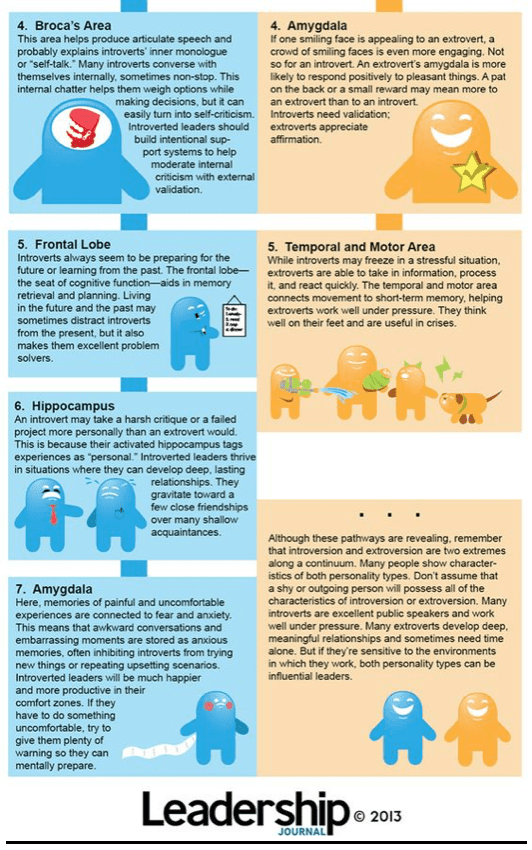SITE: MBTI historical info
BOOK: “Introvert Guide to Self-love” – by Luna & Sol
NOTE: Introversion is NOT isolation.
Dr. Carl Jung identified it as an “attitude type” (inborn), observing that Introversion & Extroversion are both healthy variations of personality style. (See earlier posts)
DEF: Introverts (Is) are both energized and relaxed by drawing energy from their own thoughts & feelings, comfortable with solitary activities, & so they place less emphasis on ‘people skills’ & talking. They perform well in analytical roles that require focus & logic.
Based on Jonathan Cheek’s research, there are 4 styles of Introversion:
• Social: Prefer to stay at home with quiet activities, or hang out with a few close friends, instead of at events with lots of strangers (NOT shyness)
• Thinking: Very introspective, thoughtful & self-reflective, highly creative, often daydreamers with a rich imagination. Occasionally don’t mind a busy social scene
• Reserved: Operate at a slightly slower pace, think before acting, careful decision-makers & take time to start things
 • Anxious: Generally – not confident in social settings, often worried about what could go wrong (projecting).
• Anxious: Generally – not confident in social settings, often worried about what could go wrong (projecting).
May ne painful shy around others, especially strangers or with new people. Nor does the anxiety always go away when they’re alone, because later they obsess about how they ‘failed’
EDITORIAL: Since Is are naturally wired a specific way, the last type may actually be one of the other 3, but wounded in childhood. Introversion does not by itself cause dysfunction!
Interesting: Researchers discovered that Introverted participants who acted like Es – when taking cognitive tests – had slower reaction times than Is who were being themself. The effort & time they wasted trying to be something they’re not naturally wired for – was distracting & depleting. This especially applies to Is having to fake it for a long time.
REMINDER : They can give themself permission & the freedom to be the way they’re ‘built’, even if the rest of the world keeps trying to mold them into Es.
Misleading: Many illustrations & cartoons unfairly portray Is as awkward, misfits, fearful & unfriendly – which are signs of emotional damage. And Es often judge Is as isolators, but that’s caused by FoA, S-H & lack of Bs, not Introversion.
ACTUALLY – it’s not unusual for Is to be gregarious, helpful, charming, warm & prodigious talkers. It’s just that they need more alone-time than Es to recover from all that expended energy
)👄(
 Using the O.C.E.A.N inventory, National Institute on Aging researchers Paul Costa & Robert McCrae expanded on the Big 5 characteristics, to include 6 facets within each dimension.
Using the O.C.E.A.N inventory, National Institute on Aging researchers Paul Costa & Robert McCrae expanded on the Big 5 characteristics, to include 6 facets within each dimension.
Introverts :
1. re. Activity Level – like to take it easy, are laid back & react slowly as situations develop
2. re. Assertiveness – let others lead the way, stay in the background & keep their opinions to themselves. Really don’t like to be pushy or demanding
3. re. Excitement – need peace & quiet, perfectly happy with daily routines. They make better roommates or neighbors since they prefer a steady, easy lifestyle
4. re. Gregariousness – are friendly but do just fine by themself, avoid crowds, preferring quiet activities such as reading or reviewing their day
5. re. Positive emotion – are usually content without showing it outwardly. They’re not as likely to express strong emotions, but do feel them deeply
6. re. Warmth – are hard to get to know at first, & can feel uncomfortable around people they don’t know well. They hold back in social situations, waiting to be approached, but may be the most interesting ones around
ACoAs
 Most Introverts (Is) were not accepted by family, school & friends, the majority of whom are Es & think typical Is are weird or disobedient. But if only someone had understood their basic traits & been willing to accept & encourage them, it would have fostered self-esteem & made life much easier.
Most Introverts (Is) were not accepted by family, school & friends, the majority of whom are Es & think typical Is are weird or disobedient. But if only someone had understood their basic traits & been willing to accept & encourage them, it would have fostered self-esteem & made life much easier.
Now we can use this info helps us better understand & accept our mates, friends, bosses…., but especially ourself, so we can treat our WIC with greater clarity & compassion. And anyone who has an internally oriented son or daughter can help them flourish, no matter what age
• CHARTS : Illustrations That Are All Too Real For Is
posted by Anna Borges on BuzzFeed (8/12/15)
«
NEXT: Introverts = Intro #2





































